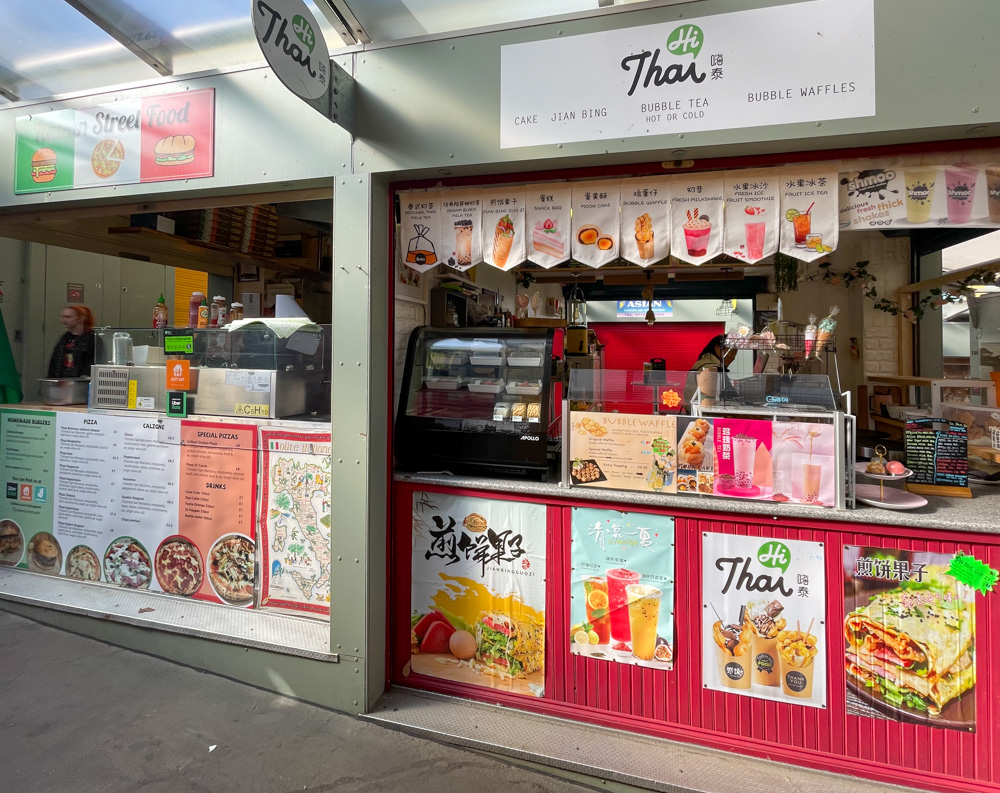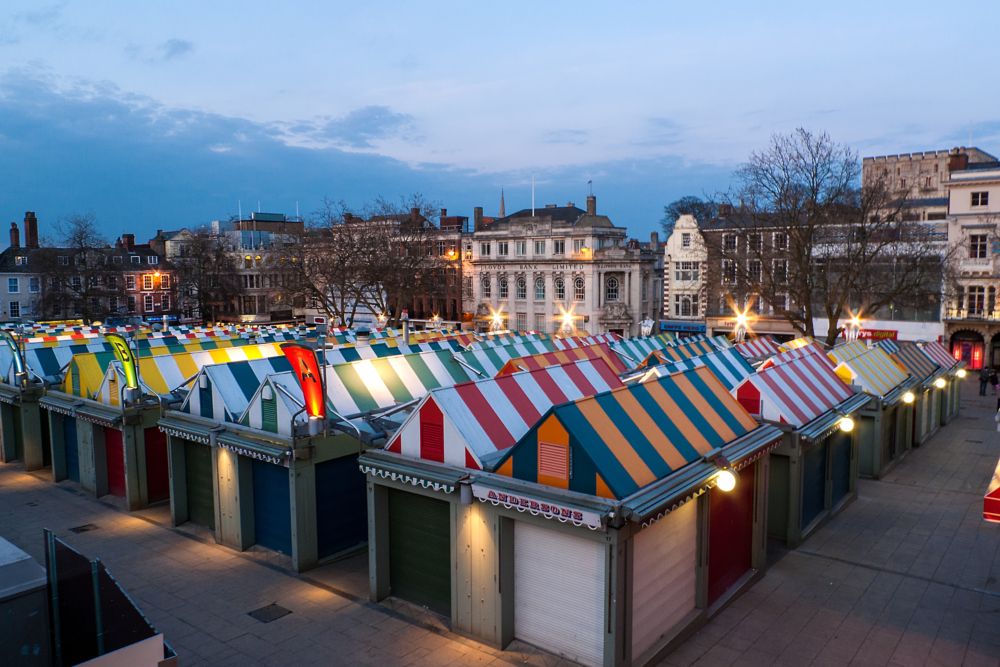One of the areas that remains most etched in our memory during a visit to Norwich is certainly the market because it is made up of colorful kiosks in the best traditional British style. Norwich Market is located on Gentleman’s Walk, right in the center and is one of the largest and oldest open-air markets in England, located in the same area for nine hundred years.
Norwich Market today
Norwich Market is open from Monday to Saturday and the various kiosks sell everything from flowers to clothes, from fish & chips to Chinese food, as well as fruit, vegetables and cheeses. I haven’t been able to try all the stalls yet because there are more than two hundred, but the fish & chips are great and other friends have confirmed to me that the noodles in the market kiosks are also worth trying. And then there are also flowers if you want to take beautiful photos for Instagram or give them on some special occasion.
The incredible history of the Norwich Market crosses Normans, royal families, the plague and British fashion. It starts from the Middle Ages, when the market was founded to supply the Normans who went to live in that area after the conquest of England. The Norman colonists were barbarians, but they were certainly good entrepreneurs because in the fourteenth century Norwich had become one of the largest and richest cities in England.
Over the years Norwich Market expanded to become a major trading center, partly because it was run directly by the city instead of paying taxes to the king. Norwich in fact received this tax exemption in 1341 when King Edward III and his mother Isabella of France visited the city for a tournament.
From that moment on, trading in Norwich grew very fast, the city was getting richer and the market continued to expand to make room for new stalls. In the Middle Ages the market was divided into rows and sections according to the type of product sold, and was surrounded by commercial buildings and inns where you would drink with friends. In addition, many laws was created to protect local traders.

Lemons, figs and other exotic fruit to revive the economy
To ruin everything, the black plague in the mid-fourteenth century reduced the inhabitants from 20,000 to less than 6,000. During this period, however, there were no looting or popular uprisings, but the economy sank completely. Eventually the city municipality gave the management of Norwich Market to local merchants who, despite the lack of customers, managed to bring it back to the ancient glories.
A new area was dedicated to exotic foods such as sugar, figs and plums. But the main exotic goods were lemons and oranges. For San Bartolomeo’s fair in 1581, the market supplied customers with over 20,000 oranges and 1,000 lemons!
By the 17th century Norwich Market had become the starting and ending point of many commercial trips. Consequently it was also a meeting place for charlatans, conjurers, puppeteers and acrobats. Luckily the following century brought a little elegance back to the city and to the Norwich Market.
Norwich Market from the Georgian gentlemen to today’s noodles
During the Georgian era, which starts in the 18th century and owes its name to some sequence of Kings Georges, Norwich became a really cool city. Gentlemen in fact went there on purpose to indulge in shopping.
Eventually the smart Norwich citizens turned the buildings around the market into luxury shops and renamed the market street as Gentleman’s Walk to attract even more wealthy customers. George Skipper’s Royal Arcade was also inaugurated in 1899, a posh shopping center in Art Nouveau style.
In the nineteenth century the market area became so crowded that it became an unsolvable urban planning mess because many stalls were privately owned. Norwich Market remained crowded and chaotic until after the First World War when the Council reacquired all the stalls and proceed with their renovation.
In the 1930s the market was radically redesigned, arranging the stalls in parallel rows and building a new town hall on the side of the square, the same structure that still maintains the beautiful colored stalls built in 2004. Today’s stalls are actually modern prefabricated units in steel and aluminum divided into four stalls which however maintain the traditional colored roof, visible even in the grayest rainy days.

Although in recent years Norwich Market has become a tourist attraction, it is still frequented by locals for daily purchases or for lunch break. I totally love the good vibes of this place and I come back as soon as I can. Let me know in the comments if you have already visited Norwich Market and what you love more of it.

